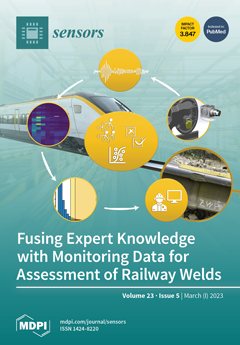Open AccessArticle
Highly Sensitive and Selective Dopamine Determination in Real Samples Using Au Nanoparticles Decorated Marimo-like Graphene Microbead-Based Electrochemical Sensors
by
Qichen Tian, Yuanbin She, Yangguang Zhu, Dan Dai, Mingjiao Shi, Wubo Chu, Tao Cai, Hsu-Sheng Tsai, He Li, Nan Jiang, Li Fu, Hongyan Xia, Cheng-Te Lin and Chen Ye
Cited by 6 | Viewed by 1888
Abstract
A sensitive and selective electrochemical dopamine (DA) sensor has been developed using gold nanoparticles decorated marimo-like graphene (Au NP/MG) as a modifier of the glassy carbon electrode (GCE). Marimo-like graphene (MG) was prepared by partial exfoliation on the mesocarbon microbeads (MCMB) through molten
[...] Read more.
A sensitive and selective electrochemical dopamine (DA) sensor has been developed using gold nanoparticles decorated marimo-like graphene (Au NP/MG) as a modifier of the glassy carbon electrode (GCE). Marimo-like graphene (MG) was prepared by partial exfoliation on the mesocarbon microbeads (MCMB) through molten KOH intercalation. Characterization via transmission electron microscopy confirmed that the surface of MG is composed of multi-layer graphene nanowalls. The graphene nanowalls structure of MG provided abundant surface area and electroactive sites. Electrochemical properties of Au NP/MG/GCE electrode were investigated by cyclic voltammetry and differential pulse voltammetry techniques. The electrode exhibited high electrochemical activity towards DA oxidation. The oxidation peak current increased linearly in proportion to the DA concentration in a range from 0.02 to 10 μM with a detection limit of 0.016 μM. The detection selectivity was carried out with the presence of 20 μM uric acid in goat serum real samples. This study demonstrated a promising method to fabricate DA sensor-based on MCMB derivatives as electrochemical modifiers.
Full article
►▼
Show Figures






